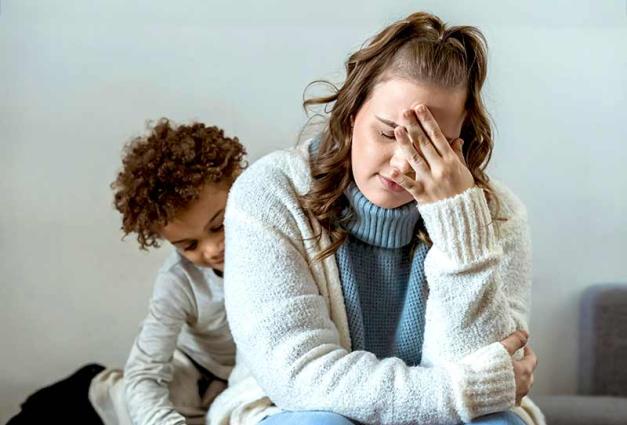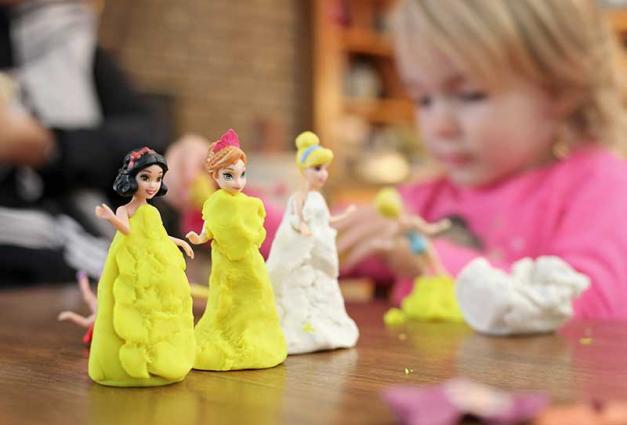A kid stubs their toe while playing on the playground. Does how much pain they're believed to feel depend on how much money their parents make? This may sound like a crazy idea, but in earlier research, we found that people believed that adults with lower socioeconomic status felt less pain and required less pain treatment than adults with higher socioeconomic status. Now we asked, do people similarly judge children with lower socioeconomic status as feeling less pain than children with higher socioeconomic status?
In our research, participants viewed school profiles depicting male children with low and high socioeconomic status and judged how much pain each child would feel following various injuries (for example, he gets an injection in his arm or he knocks his head on the corner of a piece of furniture). Each school profile conveyed some basic information like the child's name and birthdate, as well as some socioeconomic information like household income and the type of school they attended (public or private). Every time, we found that children with lower socioeconomic status were the ones expected to feel less pain. This view was prevalent in judgments of older 6-8 year old children and even extended to children as young as 3-4 years old. Why might this be?
The Relationship Between Perceived Hardship and Pain Insensitivity
Why would people assume children from lower social class backgrounds feel less pain than others? Our earlier work and work from researchers at the University of Virginia found that when adults are perceived to have lived a harder life, they are also assumed to feel less pain. In other words, people seem to strongly endorse the age-old adage that "what doesn't kill you makes you stronger."
We were interested in whether the belief that hardship toughens may also apply to children. This time, participants rated children on how hard they thought their life had been and how much adversity they thought they had overcome before rating the children's pain sensitivity. Indeed, people perceived young children with lower social class as having lived harder lives and therefore as feeling less pain. Thus, beliefs about the toughening effects of poverty appear to be pervasive and influence perceptions of how much pain young children feel.
Consequences for Pain Treatment
People believed children as young as 3-4 years old felt relatively less pain if they were from lower socioeconomic status backgrounds, but do these beliefs actually impact responses to children's pain? In a final experiment, participants judged how much pain treatment children with lower and higher socioeconomic status would require following different injuries. Pain treatment could be no pain treatment at all, up to strong opioid (for example, morphine) treatments. Participants believed children with lower socioeconomic status would require less intensive pain treatment than children with higher socioeconomic status, and this pain treatment bias was accounted for by perceptions of pain sensitivity. In other words, children with lower social class were seen as feeling less pain and therefore as needing less intensive pain treatment than children with higher social class following the same injuries.
Beyond Pain
Although the implications for pain treatment are clear, these beliefs may extend across many contexts. For example, teachers may offer shorter extensions to students with lower socioeconomic status who get injured, caretakers may be less worried about lower socioeconomic status children's pain and thus may not seek care, or coaches may be harsher to or overplay child athletes from lower-class backgrounds.
There is still much to learn, but these findings help shed light on just how pervasive class-based pain stereotypes may be. Given that young children may often rely on others around them to seek care and advocate for them, understanding that perceivers may apply class-based pain stereotypes in judgments of children is imperative.
For Further Reading
Summers, K. M., Paganini, G. A., & Lloyd, E. P. (2022). Poor toddlers feel less pain? Application of class-based pain stereotypes in judgments of children. Social Psychological and Personality Science, 19485506221094087. https://doi.org/10.1177/19485506221094087
Summers, K. M., Deska, J. C., Almaraz, S. M., Hugenberg, K., & Lloyd, E. P. (2021). Poverty and pain: Low-SES people are believed to be insensitive to pain. Journal of Experimental Social Psychology, 95, 104116. https://doi.org/10.1016/j.jesp.2021.104116
Kevin M. Summers is a graduate student of psychology at the University of Denver in the Affect, Social, and Cognitive area. Kevin's research examines the mechanisms underlying group-based biases in person perception and the downstream consequences for differential treatment in a variety of contexts.




